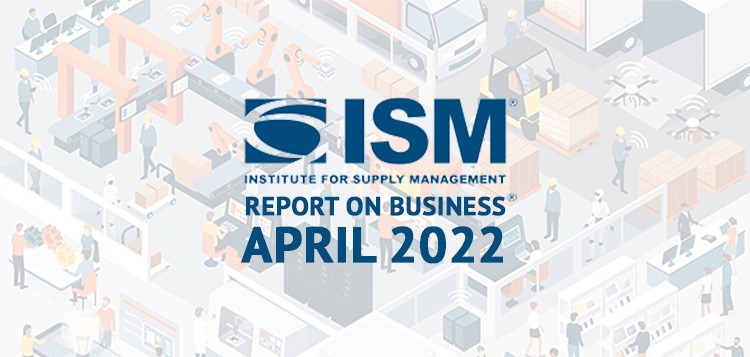Supply Chain Rears Its Head in the April 2022 Manufacturing ISM Report On Business

Supply chain concerns aren’t new in manufacturing, but they appear to finally be coming to a head. In the April 2022 Manufacturing ISM Report On Business, executives across the manufacturing industry are citing supply chain struggles as a significant reason for predictions of impending downturn. Scarcity, rising prices, backlogs, and protracted wait times are some of the supply-side problems pushing the manufacturing economy into contraction territory.
Looking closer at the tale of the tape
After averaging 59.3 over the past year, the Manufacturing PMI dropped noticeably over the past two months to a 12-month low of 55.4. It’s the lowest point since the initial economic rebound from the contractionary period of summer 2020 — and it has manufacturers worried.
Virtually every individual metric tracked in the Report on Business fell in April, save for Supplier Deliveries and Customers’ Inventories, which both posted modest gains. Employment took a substantial hit in April, posting a 5.4-point loss. Inventories and Backlogs of Orders also fell roughly 4 points each, sending both metrics closer to contraction territory. Prices also fell 2.5 points, but they remain astronomically high.

Supply and demand remain unbalanced
As inventories drop, deliveries remain strong, and prices continue to linger at historic highs. It’s abundantly clear: Manufacturing is in the throes of a supply and demand crisis. Material scarcity has elevated prices and disrupted production schedules, putting manufacturers at the mercy of inflationary practices that may soon drive a broader economic slowdown.
Industry executives are bracing for impact. According to one respondent in the Food, Beverage & Tobacco Products sector, “Supply chain is still constrained, and prices continue to rise. We are focusing on ways to stay profitable while continuing to fill customer orders. Relationship management and strong negotiation skills are extremely important right now.”
While some sectors do report supply chain easing, it could be months before prices begin to fall — and even longer before production can catch up. Industry outlooks warn contraction could occur if trends don’t improve.

Trending toward contraction
The benchmark for contraction in the manufacturing industry is a Manufacturing PMI of 48.7. It last breached this threshold exactly two years ago, in April of 2020. Now, as the figure trends down, analysts are wondering if it could cross that line again.
The PMI is following similar economic indicators across markets. The stock market, for example, has trended down since the beginning of the year. The housing market has also begun to cool after a roaring start to the year. It’s a sign of rebalancing across the pillars of the domestic economy, and manufacturing is not immune. As supply chains continue to struggle, manufacturing should brace for protracted difficulties.
While the manufacturing economy may enter contraction territory in the coming months, it’s important to remember the cyclical nature of industry — and the ability of manufacturers to foresee these challenges and prepare for them.